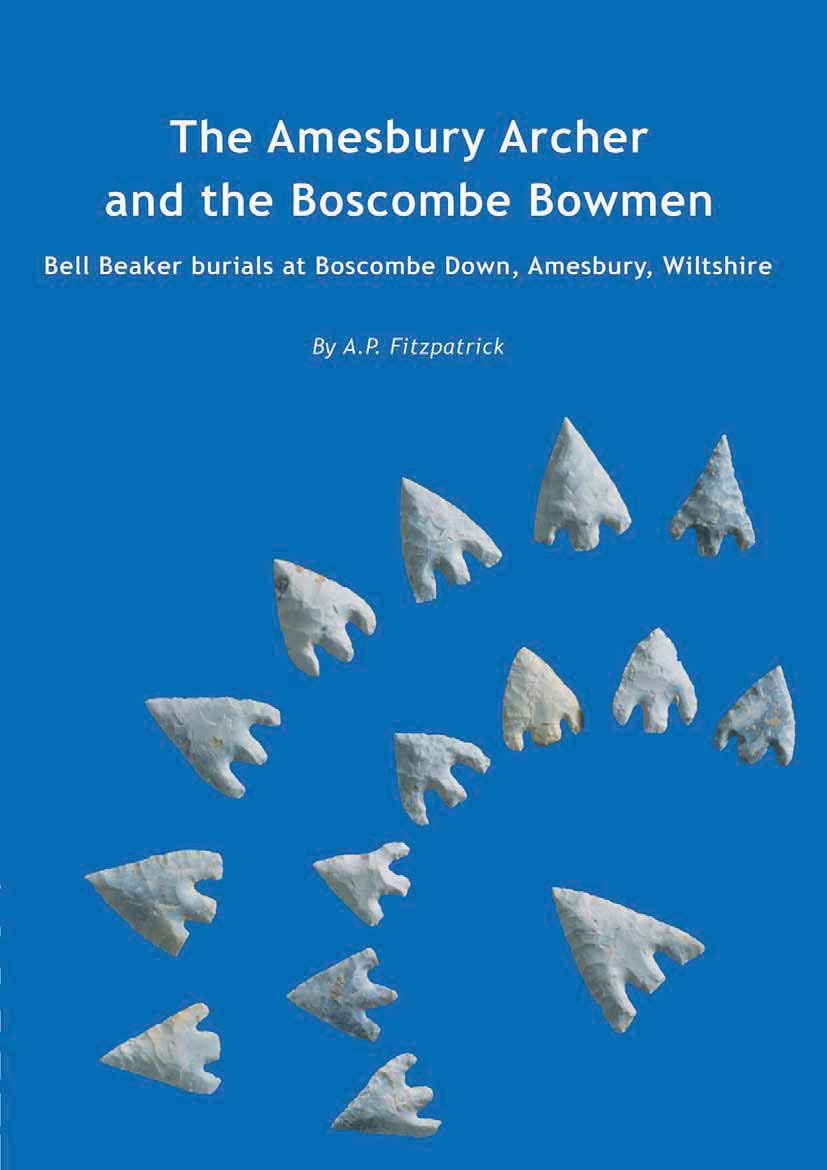The Amesbury Archer and the Boscombe Bowmen: Bell Beaker burials at Boscombe Down, Amesbury, Wiltshire
A. P. Fitzpatrick

Description
Found a few kilometres from Stonehenge, the graves of the Amesbury Archer and the Boscombe Bowmen date to the 24th century BC and are two of the earliest Bell Beaker graves in Britain.
The Boscombe Bowmen grave contained the collective burial of five adult males of Bell Beaker date, a teenager who was probably also male, and one, possibly two, children. The Amesbury Archer was the single burial of a 35–45 year old man who had lived with impaired mobility because of the absence of his left knee cap. Isotope analyses suggests that both graves were those of incomers to Wessex. A third grave, the so-called 'Companion' found close to that of the Amesbury Archer, was that of a 20–25 year old man. A rare trait in their feet shows that the two men were related.
The grave of the Boscombe Bowmen contained objects made of flint, including a group of finely made arrowheads, seven Beakers, an antler pendant, and a boars' tusk. The Amesbury Archer's grave contained an unusually large number and variety of objects, including five Beakers, several caches of flint, 17 barbed and tanged arrowheads, two bracers, three copper knives / daggers, a pair of gold ornaments, boar's tusks, and a stone tool for metalworking. The 'Companion' was buried with similar gold ornaments and a boar's tusk but no beaker. The objects have strong continental connections and the stone metalworking tool or cushion stone in the grave of the Amesbury Archer may explain why his mourners afforded him on of the most well-furnished burials yet found in Europe.
This excavation report contains a series of wide-ranging studies and scientific analyses by an array of experts, and a discussion of the graves within their British and continental European contexts.
Details
| Published | Published By | Pages | ISBN | ||||||||||||||||||||||||||||||||||||||||||||||||||||||||||||||||||||||||||||||||||||||||||||||||
|---|---|---|---|---|---|---|---|---|---|---|---|---|---|---|---|---|---|---|---|---|---|---|---|---|---|---|---|---|---|---|---|---|---|---|---|---|---|---|---|---|---|---|---|---|---|---|---|---|---|---|---|---|---|---|---|---|---|---|---|---|---|---|---|---|---|---|---|---|---|---|---|---|---|---|---|---|---|---|---|---|---|---|---|---|---|---|---|---|---|---|---|---|---|---|---|---|---|---|---|
| Jan. 1, 2011 | Wessex Archaeology | 304 | 978-1-874350-62-0 | ||||||||||||||||||||||||||||||||||||||||||||||||||||||||||||||||||||||||||||||||||||||||||||||||
| License Information | |||||||||||||||||||||||||||||||||||||||||||||||||||||||||||||||||||||||||||||||||||||||||||||||||||
| Copyright © Wessex Archaeology. This work is openly licensed via CC BY-NC-ND 4.0 | |||||||||||||||||||||||||||||||||||||||||||||||||||||||||||||||||||||||||||||||||||||||||||||||||||
